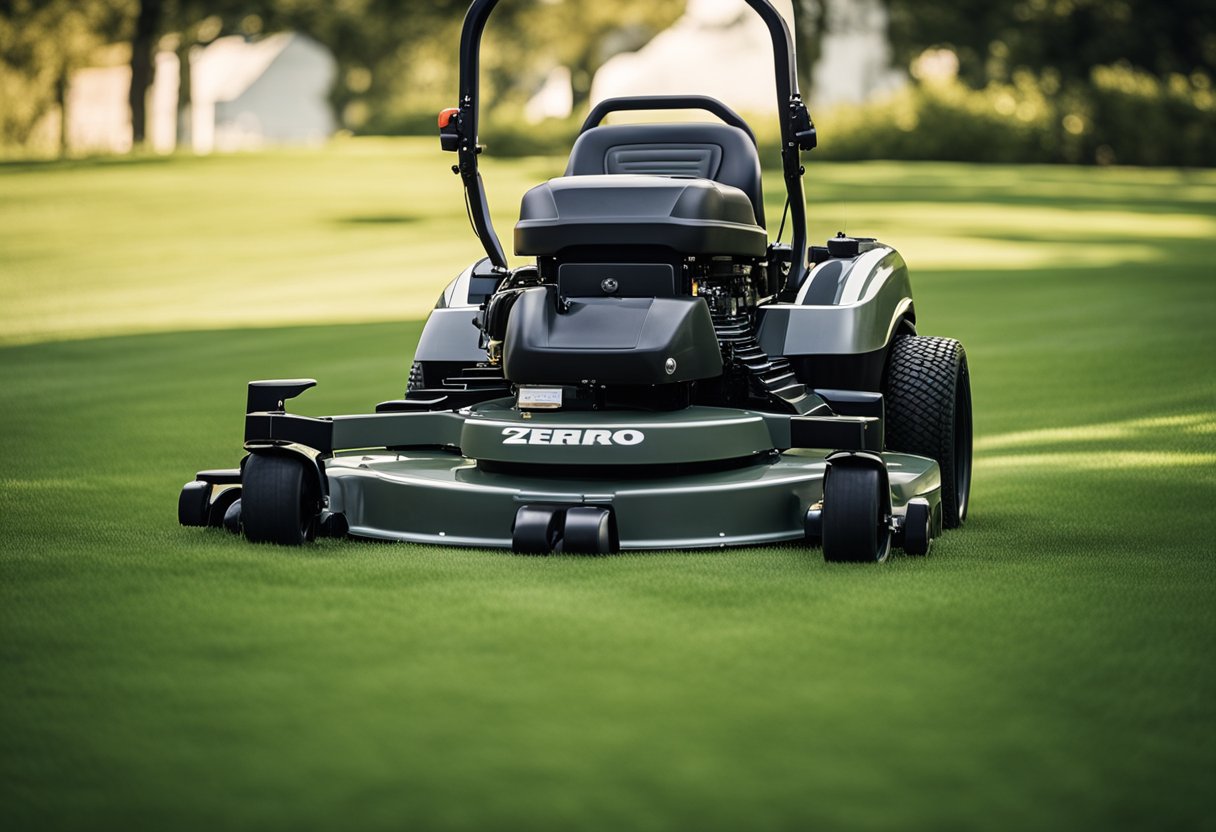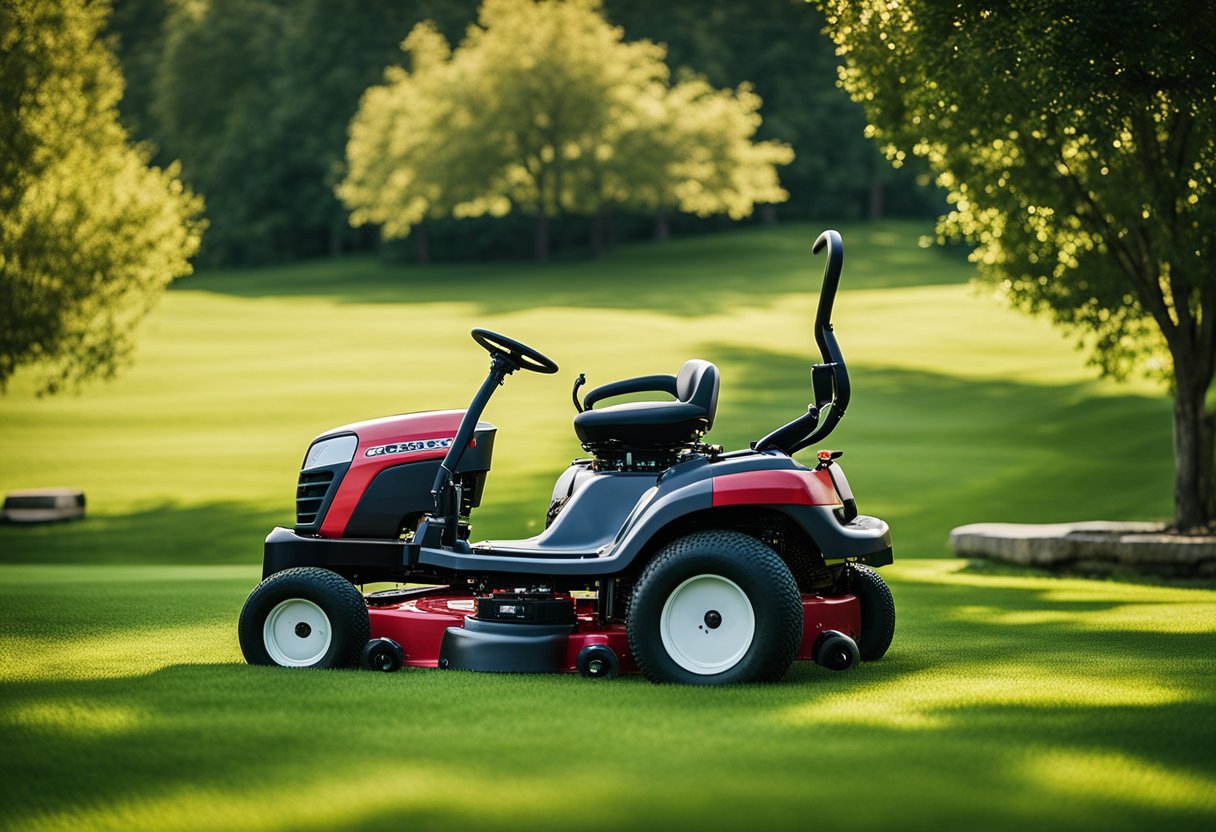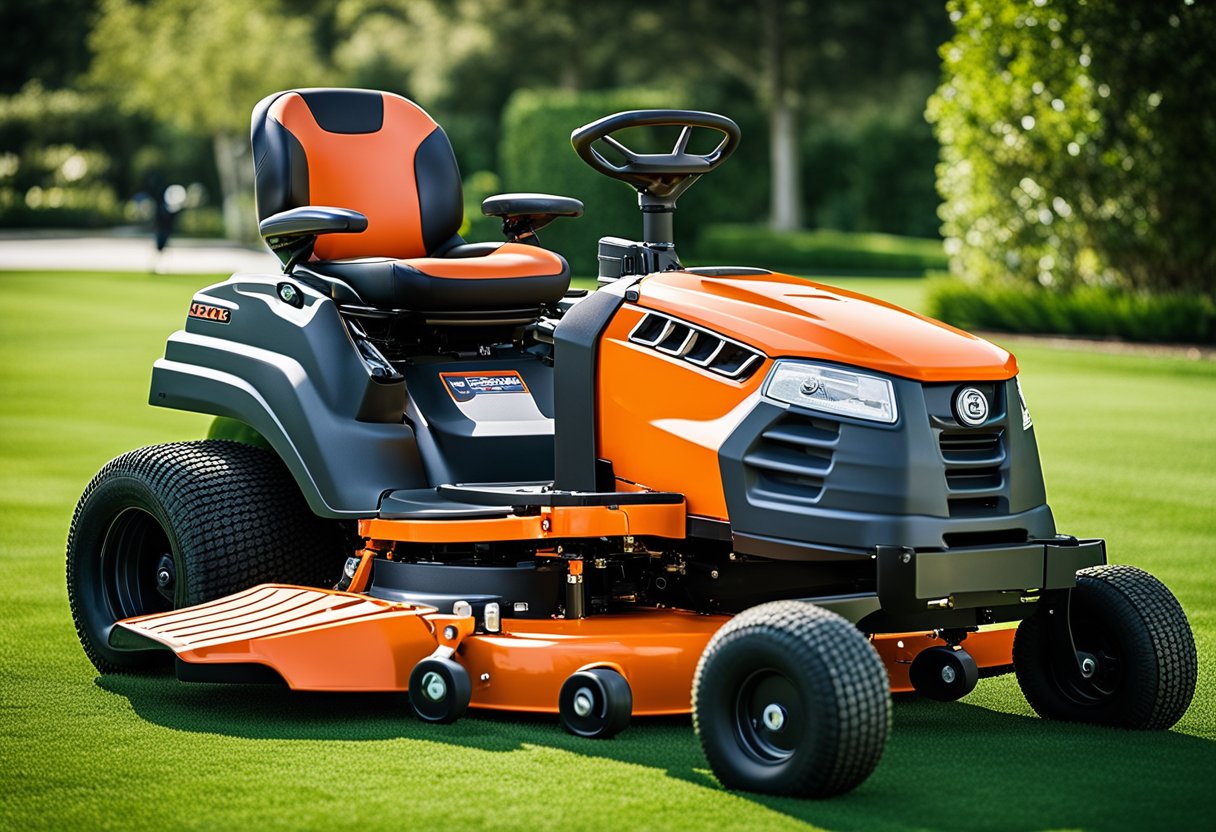Zero turn mowers are a popular selection for maintaining vast expanses of grass efficiently. The defining feature of these mowers is their ability to pivot on their own footprint, allowing for exceptional maneuverability and precision. This makes them ideal for navigating around obstacles such as trees, flower beds, and other landscaping features. With their quick speeds and shorter mowing times, zero turn mowers offer significant advantages over traditional riding lawn mowers, particularly for those with larger areas to cover.

One of the main benefits of using a zero turn mower is the quality of the cut. Enhanced design features, such as higher blade tip speeds and advanced aerodynamics, ensure an even and clean cut every time, which is hard to achieve with other types of mowers. Additionally, these mowers often come with comfort features that make the mowing experience more enjoyable, even when operating the machine for extended periods. From a well-positioned operator’s seat to easy-to-use controls, zero turn mowers are designed with the user’s experience in mind.
Key Takeaways
- Zero turn mowers provide efficient maneuverability and precision.
- They guarantee a high-quality cut with advanced design features.
- Enhanced comfort and user experience are integral to their design.
Advantages of Zero Turn Mowers
I’m here to explain how zero turn mowers stand out in the garden maintenance arena. They are designed for efficiency, exceptional maneuverability, and keeping the physical toll on the user to a minimum.
Efficiency and Speed
Zero turn mowers are renowned for their ability to save time on large lawns. Thanks to their high speeds and wide cutting decks, they can cover extensive areas quickly. For instance, mowers with a greater deck size can handle more grass in a single pass, effectively reducing mowing time significantly as compared to traditional mowers.
Precision and Maneuverability
The precision of zero turn mowers is unmatched owing to their unique steering mechanism. They boast an ability to turn around within their footprint—literally a zero-inch turning radius. This means I can achieve sharp, clean cuts around obstacles and garden beds with minimal re-mowing.
Reduced Physical Strain
One of the key advantages I’ve found is the reduced physical strain while operating zero turn mowers. They feature easy-to-use controls that lessen the effort needed to steer and manage the mower, which is a significant benefit over traditional ride-on mowers that often require more manual strength to navigate.
Design Features
Zero turn mowers boast specific design features that set them apart from traditional riding mowers. Their maneuverability, power, and efficiency stem from these key elements, enabling them to excel in lawn care.
Lever Steering
Unlike traditional steering wheels, zero turn mowers are equipped with lever steering controls. This allows for precise maneuvering, as each lever directs one of the rear wheels, enabling the mower to pivot on its axis and easily navigate around obstacles. The intuitiveness of the lever steering system greatly reduces the mowing time on complex landscapes.
Engine Power
The engine power in zero turn mowers is significant for maintaining consistent performance across large areas. These mowers often feature twin-cylinder engines, which provide a balance of smooth operation and ample power, allowing them to handle both flat terrains and slight inclines without losing efficiency.
Wheel Motors and Hydraulics
Wheel motors and hydraulics are crucial for the agility of zero turn mowers. Instead of a single transmission, these mowers utilize independent hydraulic wheel-drive systems that offer variable control over each drive wheel. This allows for sharp turns and rapid direction changes, highlighting the ‘zero turn’ radius capability that these mowers are named for.
Application Scenarios
In my experience with zero-turn mowers, they excel in maneuverability and efficiency, making them ideal for a variety of mowing circumstances.
Residential Use
For my lawn care, I’ve found that zero-turn mowers are particularly beneficial for medium to large properties with some open areas. They allow me to navigate around obstacles like trees, flower beds, and playground equipment with precision. The speed and agility save me time compared to traditional riding mowers.
Commercial Landscaping
When I tackle commercial landscaping projects, the benefits of zero-turn mowers become even more apparent. Their wide cutting decks and speed mean I can cover expansive areas like parks, sports fields, and corporate campuses quickly and effectively. Durability and comfort features matter too, since I spend long hours on the mower.
Comparison With Traditional Mowers
In my experience, the distinction between zero-turn mowers and traditional mowers lies in their efficiency and maneuverability. Let’s examine these differences in detail.
Time Savings
I find that zero-turn mowers offer significant time savings in lawn maintenance. These mowers are designed with the ability to cut grass nearly twice as fast as traditional riding mowers. This is possible due to their higher speeds and more efficient turning capabilities, which allow them to navigate around obstacles quickly and reduce the need for additional trimming.
Cut Quality
The cut quality provided by zero-turn mowers is typically superior when compared to traditional mowers. Thanks to their precision turning and the ability to easily adjust cutting speeds, I can produce an even and clean cut across the lawn. Regular mowers might require additional passes to achieve the same level of quality, especially in areas close to trees or landscaping features.
Versatility
Regarding versatility, I notice that zero-turn mowers excel with a variety of attachments and are adept at handling different terrains, although they can be less stable on steep inclines. Traditional mowers are generally more stable on uneven terrain but may lack the ability to efficiently navigate complex landscapes or to accommodate as many job-specific attachments.
Operating Techniques
When operating a zero-turn mower, I ensure that I am familiar with the machine’s specific features like the lap bars which control steering and braking. Here are the essential operating techniques I adhere to for optimal use of zero-turn mowers.
Driving Techniques
I always begin by positioning myself comfortably on the zero-turn mower, as proper posture is crucial for maintaining control. I control the direction and speed of the mower using the lap bars—if I push them both forward, the mower moves forward; if I pull them back, it goes in reverse. For turning, I push one lap bar forward more than the other. This technique allows me to execute sharp turns and maneuver around obstacles effectively.
Cutting Patterns
Choosing the right cutting pattern can greatly affect the efficiency and the outcome of mowing. I prefer the striping pattern, which involves mowing in straight lines and then turning at the end of each row to start the next. This helps me ensure an even cut and attractive lawn appearance. Alternating the mowing pattern on subsequent mows can help avoid forming ruts in the lawn.
Handling Obstacles
When I encounter obstacles, such as trees, garden beds, or lawn furniture, I slow down and approach carefully. I navigate around the obstacle with precision, making sure to leave a safe clearance. This prevents potential damage to the mower and maintains a uniform cut around the obstruction. If there are small objects on the lawn, I remove them before mowing to avoid accidents or damage to the blades.
Maintenance Insights
Maintaining a zero-turn mower, I find, contributes significantly to its performance and longevity. Key maintenance practices like routine servicing and blade sharpening are straightforward yet vital to keep the mower running efficiently.
Routine Servicing
I always recommend a consistent schedule for routine servicing, which includes checking the oil level, air filter, and tire pressure. For instance, a clean air filter is essential as it ensures the engine runs efficiently, and regular checks can prevent long-term engine damage. It’s important to assess the air filter’s condition at least monthly.
- Oil check and change: Every 50 hours of use or at the start of each season.
- Air filter: Inspect monthly and replace as needed.
- Tire pressure: Verify before each use for optimal mower control.
Blade Sharpening
Sharp blades are crucial; they make clean cuts and reduce the stress on the mower’s engine. Dull blades tear the grass, which can lead to lawn disease. I sharpen my mower’s blades after about 25 hours of use, or whenever they show signs of wear.
- Visual Inspection: Check for nicks, bends, and dullness.
- Sharpening time: Every 25 hours of use or when necessary.
- Replacement: Replace blades that can no longer be effectively sharpened.
Environmental Considerations

In my analysis of zero turn mowers, I’ve pinpointed fuel efficiency and noise levels as two critical environmental metrics. These factors weigh significantly on the environmental footprint of lawn maintenance using these machines.
Fuel Efficiency
Zero turn mowers are noted for their fuel efficiency, a substantial boon over traditional riding mowers. Their ability to cut grass more quickly translates to less time running the engine, which in turn can lead to a reduction in overall fuel consumption. For instance, the adaptability of zero turn mowers allows for a better balance between maintenance needs and environmental impact, considering they accrue fewer hours of operation.
Noise Levels
When it comes to noise pollution, zero turn mowers present a mixed bag. These mowers often have powerful engines that can be quite loud. However, because they operate more quickly and efficiently, the total time spent producing noise is often less than that of traditional lawn mowers. Therefore, considering the noise level in dB (decibels) when choosing a zero turn mower can be important for reducing the environmental noise impact.
Innovations in Zero Turn Mowers
Zero turn mowers have been at the forefront of lawn maintenance technology, incorporating features that enhance efficiency, control, and user experience.
Smart Technology Integrations
I’ve observed an impressive shift towards smart technology in zero turn mowers. Manufacturers are embedding systems that allow for seamless communication with devices, providing real-time data on mower performance and lawn conditions. For instance, some zero turn mowers come equipped with GPS navigation which optimizes mowing patterns for increased efficiency.
Safety Enhancements
When it comes to safety, zero turn mowers have certainly upped the ante. I’ve noticed a significant emphasis on features aimed at protecting the operator. Enhancements like rollover protection structures (ROPS) and advanced braking systems are becoming standard. These engineering improvements help to prevent accidents and provide greater peace of mind for users across various models.
Buying Guide
When selecting a zero-turn mower, I must consider both the size and power necessary for my lawn, as well as how this investment fits within my budget. Choosing the right brand is just as important for long-term satisfaction and reliability. I’ve written an article on the 7 Best Small Zero Turn Mowers for Your Garden here.
Size and Power Requirements
Lawn Size: For smaller lawns, I may not need a large cutting width. However, for larger properties, a mower with a wider deck can save me considerable time.
- Up to 0.5-acre: Mowers with cutting decks around 30 inches
- 0.5 to 2 acres: Mowers with decks 42 to 48 inches
- Over 2 acres: Mowers with decks 50 inches or more
Power Output: The horsepower (HP) of the mower should match the task at hand. More HP can handle tougher terrain and thicker grass more effectively.
- Light use: 14-20 HP
- Medium use: 20-25 HP
- Heavy use: 25 HP or more
Budget and Brand
Budget: I need to establish my budget before mower shopping. Entry-level zero-turn mowers start at a lower price point, but they may lack features that more expensive, prosumer or commercial-grade mowers offer.
- Entry-level: Suitable for light-duty tasks
- Mid-range: Balance between features and price
- High-end: Advanced features, longer lifespan, higher cost
Brand Reliability: Although I’m not focusing on specific brands, it’s essential to research the reputation of manufacturers. Brands that offer extensive warranties, customer service, and parts availability provide additional value beyond the purchase price.
- Research customer reviews and industry feedback.
- Consider the availability of local services and parts.
By assessing the lawn size, terrain, and budget, I can pinpoint the mower specifications that will work best for me. This ensures my investment in a zero-turn mower meets both my performance needs and financial constraints.
User Testimonials and Reviews

In researching zero turn mowers, I’ve encountered numerous testimonials highlighting their efficiency and maneuverability. Here’s a snapshot of what I’ve found:
- Ease of Use: Many users report a significant decrease in mowing time due to the advanced steering capabilities. A Good Housekeeping review reflects users’ appreciation for the mowers’ ability to navigate tight spaces with ease.
- Comfort: Reports from Better Homes & Gardens suggest that the comfort of zero turn mowers is a game changer. The ergonomically designed seats and intuitive controls contribute to a pleasurable mowing experience.
- Performance: Users often celebrate the raw power and durability of these machines, going so far as to highlight specific models. The Husqvarna Z254F, for instance, receives praise for its balance between performance and size in user reviews.
| Feature | User Feedback |
|---|---|
| Speed | “Cuts my mowing time in half!” |
| Navigation | “Can turn on a dime…makes mowing around obstacles a breeze.” |
| Comfort | “Feels like sitting in a luxury car, but for mowing.” |
My takeaways align with these reviews, as I’ve found zero turn mowers to be a robust choice for both residential and commercial use. The user feedback I’ve encountered reinforces the notion that these mowers stand out in the market for their innovative design and user-centric features.
Summary and Final Thoughts

In reviewing the benefits of zero-turn mowers, I’ve highlighted why they are a top choice for maintaining lawns. The key advantage lies in their agility and speed, which. They offer efficient mowing with less time required to maneuver around obstacles like trees and flower beds. Indeed, these machines are powerhouses in lawn care, capable of handling medium to large areas with ease.
Through my research, I have found that manufacturers have addressed comfort and safety, equipping modern zero-turn mowers with features that make them comfortable to operate while ensuring the safety of the user. The faster cutting times also translate into less fuel consumption or energy utilization, making them an economically sound investment.
Here are a few standout attributes of zero-turn mowers:
- Fast and precise: Capable of cutting close to edges and around obstacles.
- Comfortable: Ergonomically designed for reduced operator fatigue.
- Economical: Less time mowing means lower fuel or energy costs.
In my assessment, for those with the right type of lawn and budget, a zero-turn mower is certainly a valuable tool. I recommend checking out comprehensive reviews like those on Better Homes & Gardens and expert opinions from sources like The Spruce, which offer in-depth analyses of various models to help in making an informed purchase decision.
Frequently Asked Questions
In this section, I’ll address some of the most common inquiries about zero-turn mowers, shedding light on their advantages, performance on different terrains, longevity, handling, and potential drawbacks.
What are the benefits of using a zero-turn mower over a traditional riding lawn mower?
Zero-turn mowers offer superior maneuverability with their ability to rotate on their axis, allowing me to easily navigate around obstacles and make quick, efficient turns. This precision reduces mowing time and offers a cleaner cut, distinguishing them from traditional riding mowers.
How does a zero-turn mower perform on sloped terrains compared to a riding mower?
On sloped terrains, zero-turn mowers can be more challenging to handle due to their higher speed and maneuverability. It’s crucial to approach inclines with caution, as these mowers can become unstable on steep grades, representing a potential safety hazard.
How Long Do Zero Turn Mowers Last?
With proper maintenance and care, zero-turn mowers can last for many years. On average, a well-maintained mower can operate for 1500 to 2000 hours before major repairs or replacement may be needed.
Can zero-turn mowers with steering wheels offer a smoother ride than those with levers?
Zero-turn mowers with steering wheels may provide a more familiar and smoother riding experience compared to those with levers, especially for users transitioning from traditional riding mowers.
What are the primary drawbacks of utilizing zero-turn mowers for lawn maintenance?
The main drawbacks of zero-turn mowers are their higher cost and potential for turf damage due to their high speed and pivot turns. Additionally, they require a learning curve to operate safely and effectively.
Are Zero Turn Mowers Dangerous?
If not operated correctly, zero-turn mowers can be dangerous. Their agility and speed demand respect, especially on uneven terrain or near drop-offs where the risk of rollovers increases.
For maintaining a 5-acre property, should one invest in a tractor or a zero-turn mower?
For a 5-acre property, investing in a zero-turn mower can be advantageous due to its faster cutting speed and efficiency, saving time and effort compared to a traditional tractor.
What common issues should owners anticipate with zero-turn mowers?
Owners of zero-turn mowers should anticipate issues such as belt wear, hydraulic drive system failures, and engine problems. Regular maintenance and timely repairs can mitigate these issues.
- Best Brush Cutter: Top 5 Models for Lawn Maintenance in 2024 - January 10, 2024
- Protecting Your Garden from Rodent Damage: Tips and Tricks - December 14, 2023
- Small Space Gardening: Transform Your Garden with Raised Beds - December 10, 2023